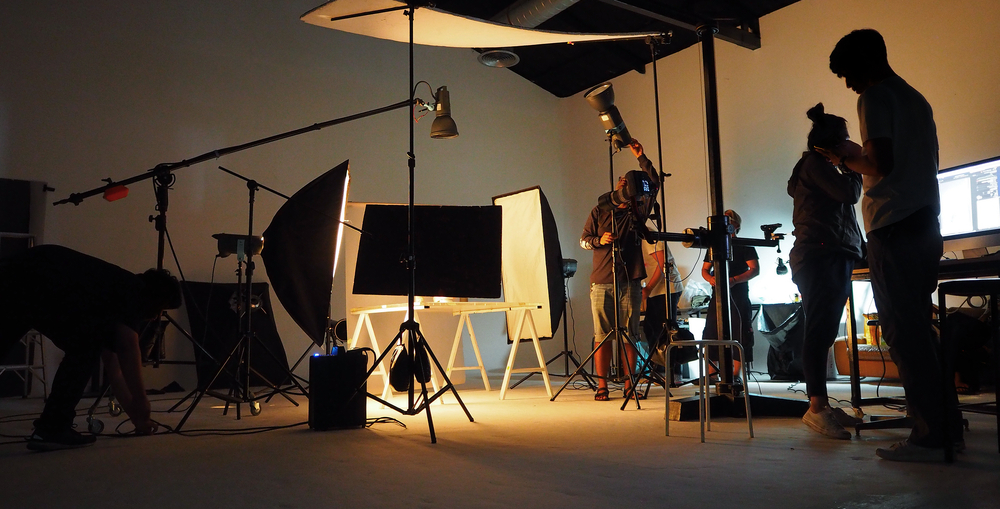
Quick and Easy Ways To Improve Video Quality
Plus: How to improve videos that have been previously recorded and didn’t turn out so great.

What will we see in this post
Are you looking to take your content to the next level?
In this article, we’ll cover all the tips and tricks you’ll need to make a quality video, including lighting, composition, video enhancers, editing, and audio recording. Whether you are shooting and editing training videos, marketing videos, or any other type of video, our recommendations will help you achieve the best outcome.
After reading this article, you’ll be able to produce a quality video to proudly showcase on your blog or promote it on social media. By placing importance on each step of the video-making process, from the camera selection all the way through to the final production stages, you will greatly increase your chances of a good outcome for your efforts.
We will also include ways to easily promote your masterpiece once it’s complete. Read on to learn how to enhance the quality of your videos with these tips to help you produce, shoot, and edit a winning video.
Select a quality camera
While many factors affect video quality, the camera you select will be one of the most impactful decisions you make and will certainly play a role in the quality of your video. Use a high-quality camera whenever possible. Be aware that a steadier image will result in a higher-quality video, and avoid shaky camerawork by using a tripod or other stabilizing device.
When selecting the camera for your video shoot, many important factors must be considered:
- First, decide what format you want to shoot your video in. Do you want to use HD or 4K? HD has become standard but 4K has advantages too.
- Second, consider what sensor size will be most optimal. A larger sensor will give you a shallow depth of field, which can be flattering for close-ups.
- Third, think about what kind of lenses will work best. You’ll need to decide which focal length you want to shoot at and whether you want to use a prime or zoom lens.
- Last, think about accessories you’ll need for your video. Do you need a tripod or gimbal? What about the microphone?
These are a variety of crucial factors to consider when selecting a camera for a video shoot. Being unprepared when it comes time to shoot your video is sure to lead to a frustrating experience for you and your crew. By considering and understanding these factors, you’ll ensure that you are prepared with everything you need BEFORE it’s time to shoot your video. Being prepared with the right equipment will result in a better experience with less stress for everyone involved and will also be key to building a credible reputation for yourself as someone who is aware of what tools are required.
Lighting
Make sure you have enough light. Poor lighting can make even the most well-shot video look too bright or too shadowy. Natural light is best, but if you have to use artificial light, try to use soft, diffused light rather than harsh, direct light.
There are plenty of lighting options to choose from for video shoots, each with unique advantages.
- Clamp lights are a popular choice for on-location shoots because they’re generally easy to set up and take down as needed.
- Studio lights are another popular option, especially for controlled settings like interview shoots.
- Panel lights are also a popular option for video shoots, providing soft and even lighting that you can easily adjust to create the desired effect.
How to set up three-point lighting
Three-point lighting is a type of lighting setup that uses a trio of lights to illuminate a subject. The three lights are typically placed at different angles, with one shining on the front of the subject, one shining on the back of the subject, and one shining from the side.
Videographers can create a more professional-looking final product using three distinct lights. This type of lighting setup is an excellent video enhancer. It works well for video shoots because it helps to create shadows and depth, making the subject appear more three-dimensional on camera. Additionally, three-point lighting can help to reduce glare and other unwanted reflections.
When setting up three-point lighting, there are a few things to remember:
- First, you’ll need three light sources: a key light, a fill light, and a backlight.
- The key light should be placed at a 45-degree angle from the subject, with the fill light placed on the opposite side.
- You should set the backlight at a high angle behind the subject to create a halo effect.
Once you have your light sources in place, you can experiment with different placements and intensities to find the perfect balance for your shoot.
Video composition
Pay attention to composition. Video composition is the process of choosing the best location and angle for your subject.
Remember the rule of thirds. This video principle states that, when shooting, the frame of your camera should be divided into thirds, vertically and horizontally. These lines intersect where the eye is naturally drawn, so this is an ideal spot to center your subject. Your video quality will be significantly enhanced by staying within the rule of thirds.
Background
Pay attention to the background and try to keep it simple. A background that is too busy will be distracting and take away from the content of your video. Be sure to eliminate any distractions that will take away from your subject.
Audio
Poor audio quality will divert attention away from what is really important: your content.
If you want to produce video content with good audio quality, make sure your audio is clear. This means using a high-quality external microphone and recording in a quiet environment. Built-in camera microphones usually don’t allow good audio capturing. An external condenser and dynamic microphone will make a massive difference during editing.
- Be sure to make an investment in a good quality microphone to ensure that your audio is clear and free of background noise.
- Add music and sound effects. These can add depth and interest to your videos.
When selecting audio equipment for a video shoot, it is essential to consider the type of recording you will be doing.
- If you are recording voice-overs or interviews, you will need a good-quality microphone that can capture clear audio for conversations.
- If you are recording music or sound effects, you will need a microphone with a high-frequency response.
Additionally, you will need to decide whether you want to use a wireless or wired system. Wireless systems are typically more expensive, but they offer the convenience of not worrying about tangled cables.
Finally, make sure to test out the audio equipment before the shoot to ensure that it is functioning correctly. If you take these items into consideration, you will be able to select the audio gear that will be best suited for your needs.
Editing software
Use a quality video editor. When selecting video editing software, there are a few key factors to consider.
- First, you’ll need to think about compatibility. Check to verify that the software you choose is compatible with your computer’s operating system and any other devices you plan on using it with.
- Next, you’ll want to decide what type of videos you’ll be editing. If you’re just starting out, you may want to choose a program that is easy to use and has a variety of built-in features. However, if you’re more experienced, you’ll likely want a program that offers more advanced features.
- Finally, consider the price of the software. There are many affordable options available, but you may also want to consider whether you’re willing to pay for a subscription or a one-time fee.
Editing
Edit your video carefully.
- Remove any unnecessary footage and focus on the most critical details.
- Add titles and credits—these will help to identify your videos and give them a professional look.
- Adding graphics and special effects can further improve the visual quality of your videos.
Video enhancers can help to breathe new life into subpar footage when you are out of other options. Look for enhancers that offer features to help with improved stability, de-noising, brightness adjustments, cropping, rotating, and flipping, filters, effects, animations, and title cards. You can find more tips and information about video editing here: Video Recording Apps: The 20 Best Options [+BONUS TIP] (hotmart.com)
Formatting
- Shoot in HD. Not too long ago, high-definition video was considered a video enhancer, but it is now becoming the standard, so investing in a camera that can shoot in HD is essential.
- Choose the correct format for your videos. Many different formats are available, so be sure to choose the one that best suits your needs.
- Export the highest quality video possible if you want to ensure that your videos look their best when viewed by others. Handbrake is one open-source video quality enhancer that you can use to change your video’s frame rate and format if needed.
Search optimization
If you expect people to be able to find your videos efficiently, you need to do the work to increase the visibility of your videos. You definitely want people to be able to find the videos you’ve put so much time and energy into creating, right? Consider following the tips below:
- Optimize your videos for search engines.
- Share your videos on social media sites.
- Embed your videos on your website or blog.
- Submit your videos to video-sharing sites.
- Promote your videos through email marketing.
Sharing your videos on social media and embedding your videos on your own website are just the start when it comes to getting the word out. There are plenty of video-sharing sites online where you can post your videos to reach a wider audience.
Additionally, email marketing is still one of the most effective methods of marketing online courses. For this reason, it is wise to include email marketing in your marketing plan and be sure to start building an email list right away. The bigger your email list, the more potential customers your video can reach through this method.
Poor video quality = No audience
Video quality is essential for video creators who want to share their knowledge online or who are ready to take the next step in online entrepreneurship. After all, when was the last time you watched a poorly made video all the way to the end? Most people won’t even spend five seconds watching a video that is poorly made. The second we realize the audio is bad, the lighting is wrong, or the video is amateurish in any way whatsoever, we move on.
There are plenty of high-quality videos out there, so there is just no way to compete with these without making the highest-quality video possible. There just isn’t any reason to put energy into publishing low-quality videos because nobody will watch them. You have to agree that producing videos that nobody watches would certainly not be the best use of your time.
The good news is you don’t need a lot of fancy equipment to make a high-quality video. Just be sure to follow the tips we’ve presented in this article.
And for a complete ecosystem that helps creators build, market, and sell digital products worldwide, check out Hotmart: the platform has an easy-to-use, ready-to-go system that makes it easy to produce and share your videos.
With Hotmart, you can easily bring your audience, customers, and digital products together in one place where you can showcase your videos in an ecosystem built to engage and sell more.





